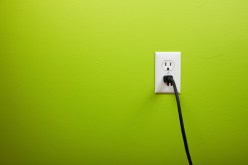Troubleshooting Guide: How to Fix Weak or No Signal on Your TV
Are you tired of dealing with a weak or no signal on your TV? It can be frustrating when you’re trying to watch your favorite shows or movies, only to be met with a blank screen or poor reception. But fear not. In this troubleshooting guide, we’ll walk you through the steps to fix weak or no signal on your TV.
Check Your Connections
The first thing you should do when faced with a weak or no signal on your TV is to check your connections. Ensure that all cables are securely plugged in and that there are no loose connections. Start by inspecting the cable connecting your TV to the wall outlet. If it’s loose, simply tighten it and see if that improves the signal.
Next, examine the cable connecting your TV to any external devices, such as a cable box or DVD player. Make sure it is firmly connected at both ends. If necessary, unplug and reconnect the cable to ensure a secure connection.
If you’re using an antenna for over-the-air broadcasts, check the coaxial cable connecting it to your TV. Look for any signs of damage, such as frayed wires or bent connectors. Replace the cable if necessary, as damaged cables can significantly affect signal quality.
Reorient Your Antenna
If you rely on an antenna for receiving television signals, your weak or no signal issue may be due to its positioning. The location and direction of your antenna play a crucial role in picking up signals from broadcast towers.
Start by experimenting with different positions for your antenna. Sometimes simple adjustments like moving it higher up on a wall or closer to a window can make a significant difference in signal strength. You can also try rotating the antenna slightly in different directions until you find the optimal position.
To determine which direction to point your antenna, visit websites like AntennaWeb.org or FCC.gov that provide information on the location of local broadcast towers. Once you know the general direction, adjust your antenna accordingly.
Amplify Your Signal
If repositioning your antenna doesn’t solve the weak or no signal issue, you may need to consider amplifying the signal. Signal amplifiers, also known as signal boosters or preamplifiers, can help overcome obstacles such as long cable runs or weak signals from distant broadcast towers.
To use a signal amplifier, connect it between your antenna and TV. The amplifier will receive the weak signal from the antenna, boost its strength, and send it to your TV for improved reception. Keep in mind that amplifiers work best when used with high-quality cables and connectors.
Before purchasing a signal amplifier, ensure that it is compatible with your specific TV setup and frequency range. Some amplifiers are designed for specific types of signals (e.g., UHF or VHF), so make sure to choose one that matches your needs.
Contact Your Service Provider
If all else fails and you’re still experiencing a weak or no signal on your TV, it may be time to contact your service provider. They can perform diagnostics remotely or send a technician to assess the issue firsthand.
When contacting your service provider, be prepared to provide them with detailed information about the problem you’re facing. Let them know if the issue is affecting all channels or only specific ones, and if other TVs in your home are experiencing similar problems.
In some cases, the weak or no signal issue may be due to technical problems outside of your control. Your service provider will be able to identify and resolve these issues more effectively than you could on your own.
By following these troubleshooting steps, you should be well on your way to fixing weak or no signal issues on your TV. Remember to check connections first, reorient your antenna if necessary, consider using a signal amplifier if needed, and reach out to your service provider as a last resort. Enjoy uninterrupted TV viewing.
This text was generated using a large language model, and select text has been reviewed and moderated for purposes such as readability.





